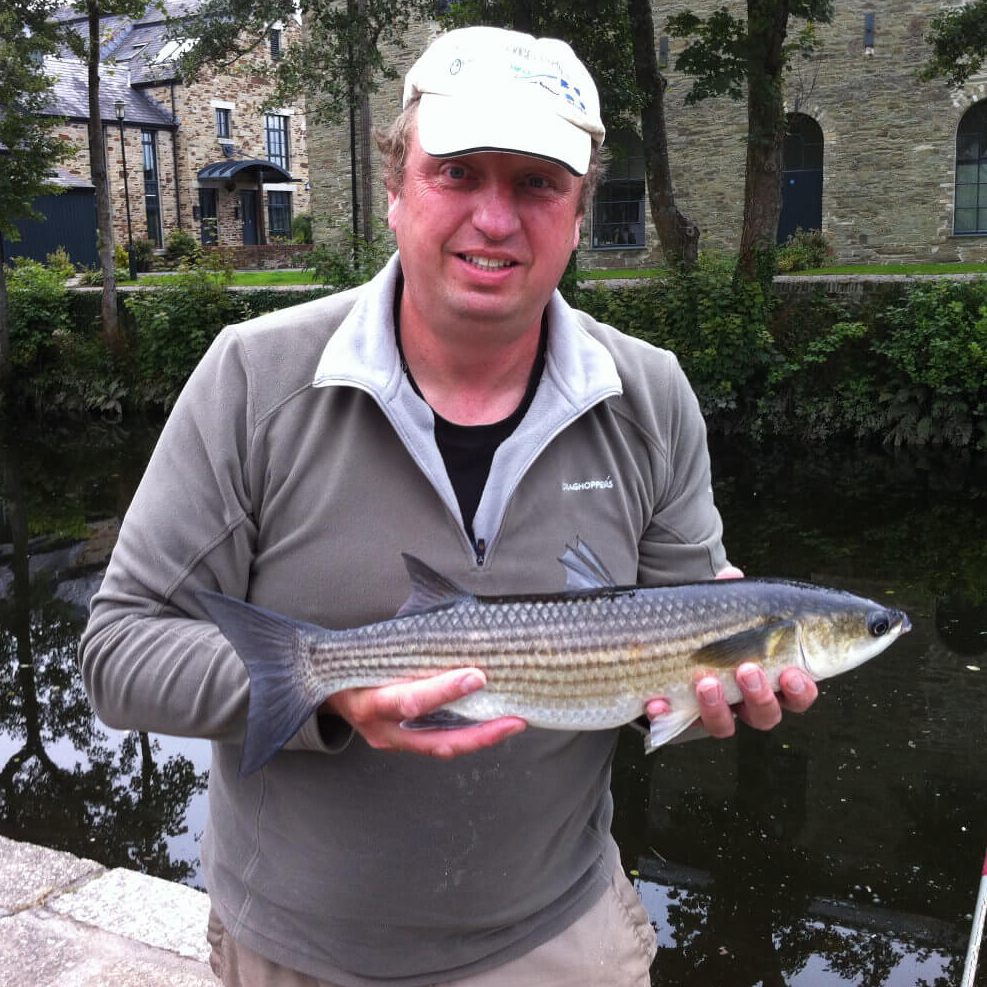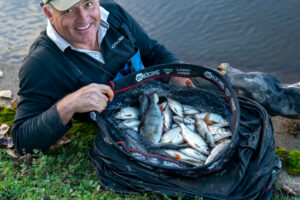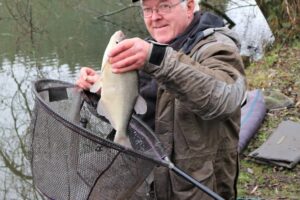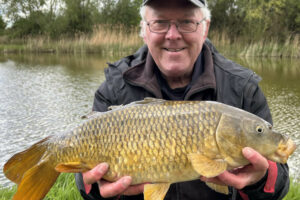Mullet fishing is fun and exciting, although they’re a saltwater target much of the tackle and tactics used have their roots in coarse fishing, so you can target them with your existing gear. National Mullet Club Chairman, Andy Burt, takes a look at how he got started, the tackle he uses and looks back at a recent memorable trip to Cornwall.
Back in 2013 Sharon my wife said we should try Cornwall for a holiday. We had the previous two years been to Devon, I had taken a bit of fishing gear with me and had dabbled at trying to catch a mullet. I failed. This time I decided I was going to put that right and careful selection of destination was required. I love to fish a float on rivers and previously fishing in big harbours had failed so surely a tidal river? It’ll be like chub fishing? Surely this time I would have the advantage?!!
Over the next few weeks Sharon would patiently look through various destinations before bringing them to me for vetting. I would look it over and dismiss them for various reasons, no good for the dogs, too small, no pubs etc. Mostly though because any nearby fishing was not what I wanted. One evening Sharon said, “what about this one?”, I looked it over, it looked good, I Googled the town.
Lostwithiel; on the tidal River Fowey, sounds promising, four pubs, beginning to sound better, one last check: fishing in Lostwithiel. The result said, “free fishing in the town for salmon, sea trout, brown trout and MULLET” RESULT!!! A week in September was duly booked.
We got down there and the accommodation was just across from the river. Sharon met the owners who ran an antique shop below the accommodation, I said I had to walk the dogs after such a long journey and went straight to the river. It did look nice and the tide had just started to turn. I looked into the river and saw three large grey shapes drift over a gravel bar and move on upriver, you can see how they get one of their nicknames of grey ghost. My confidence rose and I could not wait to get the gear out.
Dogs walked; car unpacked. A Co-op had helpfully opened a bait shop across the road that also sold cold beer, so I purchased some loaves of bread for bait and some refreshments. I sat on the quay and set my gear up then mashed some bread. There was by now about three foot of water and I could no longer see the bottom, crucially I had seen some mullet already. Some bread was thrown in, a beer opened, and I sat on the quay in the late afternoon sunshine and could not be happier running that float down, feeding some bread and making constant but ultimately unnecessary adjustments to my float depth whilst drinking a few cold beers. Truly, it was bliss.
About half an hour later the float buried, it was a decent fish that turned out to be a lovely looking brown trout of around a pound or so, twenty minutes later it went under again and another one was landed. Not what I was after, but I did not really care. Then, another twenty minutes later, the float buried again. This time it instantly felt heavier, there was a couple of massive thumps on the rod as the fish shook fiercely then all hell broke loose as it careered up and down the river before trying to get up the far bank or under the quay. This would then be followed by more head shaking and careering all around the river. Eventually the fish tired and after two years my first mullet slipped into my landing net and boy was I not just extremely pleased but very, very relieved. I had just found out why they have their other nickname of the “British Bonefish!”
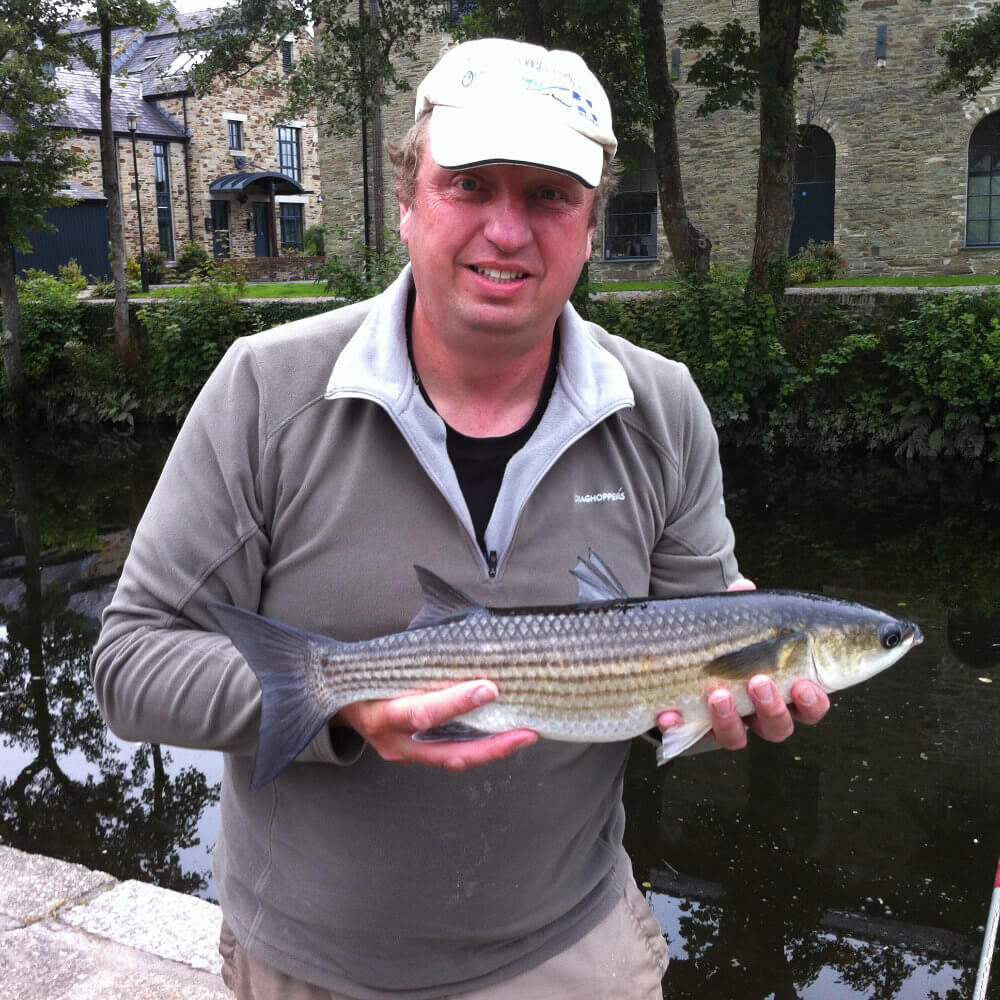
After that I caught another two before calling it a night. I did not realise at the time what an effect that would have on my fishing to the extent that I am now chairman of a club whose interest is in catching mullet and much of my fishing through spring, summer and autumn is spent fishing for these enigmatic fish. In this blog I will talk about mullet fishing tactics and tackle, and about another memorable and recent session in Cornwall.
There are three resident species of grey mullet in the UK and all can be caught using traditional bait fishing, albeit more like coarse than sea fishing, lure or ever more popular fly fishing tactics. Most of my mullet fishing is for thick lip grey mullet. They can be caught using feeder tactics, but my favourite way is float fishing either with a waggler or a bolo type float. Bread is usually bread flake and feed either mashed or liquidised bread. I like mash as it has bigger bits to act as feed but can be messy to fish with. I more often use liquidised; I prefer the Morrison’s Toastie, blended coarsely to again provide food particles. This can be fed quite easily by hand or catapult or even in a feeder or moulded around a lead, it is extremely versatile.
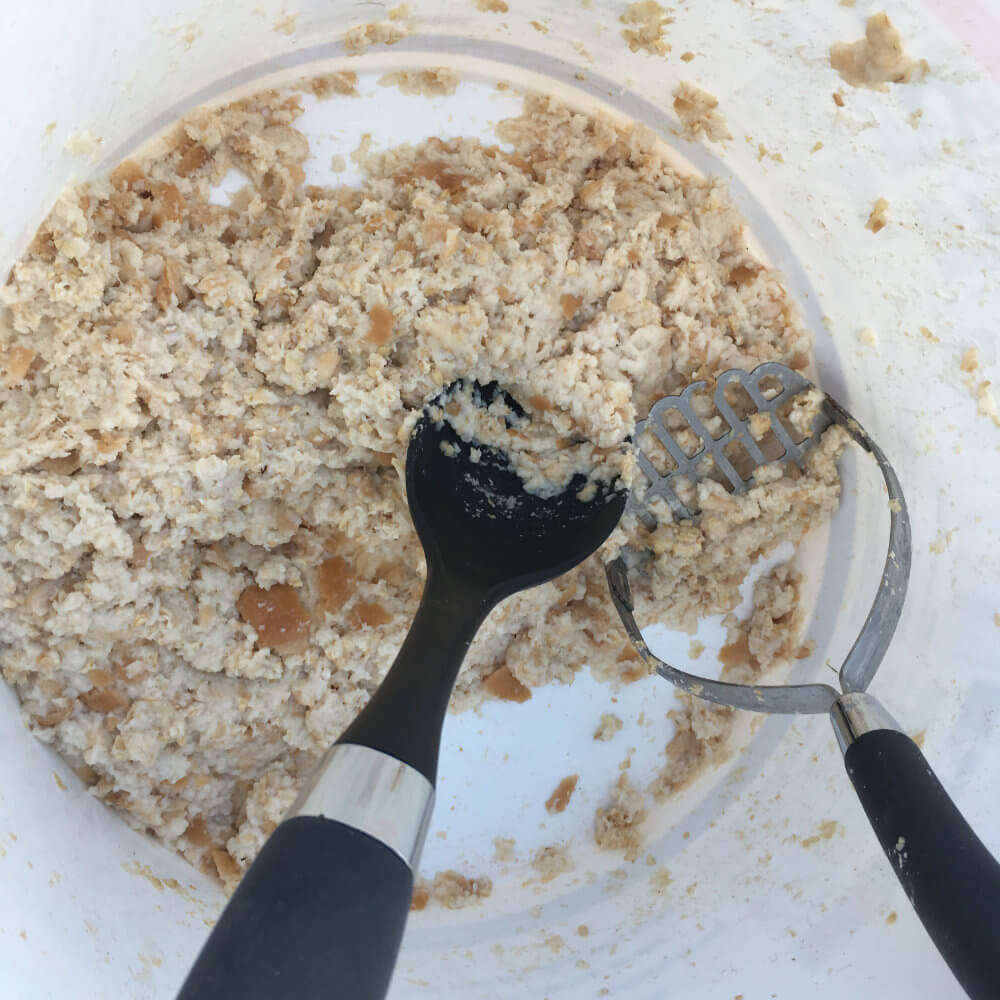
Coarse Tackle for Mullet Fishing
The bolo setup is on a Cadence CR10 14ft #3 Match Rod with a 4 or 6 gram bulk, the same rig I use for chub with 5 or 6 pound mainline treated to float with some mucilin and a fluorocarbon hooklength, I use Grand Max, usually 0.21mm. It has a stated breaking strain of some 9.5lb. This may seem unbalanced, but it is still thinner than most others such as Drennan Fly Leader but is also supple, tougher and gives a great deal of impact resistance and believe me your hooklength will need to take some abuse! Hook is a size 6 or even a size 4 Kamasan B920, if you cannot get these a popular choice is the Kamasan B583 either size 8 or 10. For those of you used to modern day ‘wide gape’ type hooks don’t be alarmed. They are a forged fine wire crystal, extremely strong and unlikely to bend but not actually that big across the gape!
The bolo not only comes into its own when fishing in a flow but in and around structures where it can be cast close to pontoons for instance (like chub and many other fish, mullet like some cover), and then the line easily mended to keep the float in position. Not so easily done with a waggler.
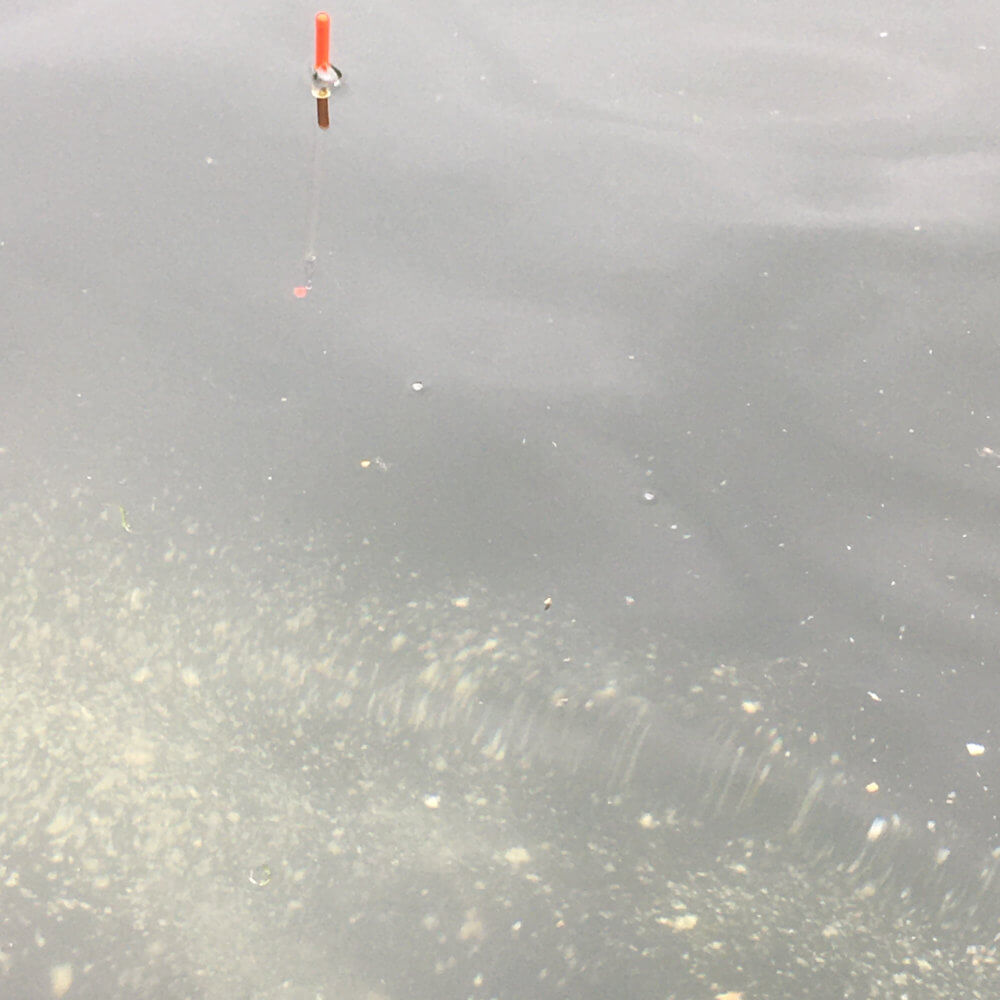
My waggler setup is probably the most versatile and easy to use. The rod I prefer for this is the Cadence CR10 11ft #2 Match Rod. As it is a waggler there is no need to have the longer rod to control your float. The shorter 11ft with its lovely through action allows control of hooked fish in tight situations and being 2 piece, it is easier to keep made up and move around. The float is where the setup is slightly different. I like to have it set as a slider which means I can use it in as shallow or as deep a water as I like. The float I prefer is the Drennan Glow Tip waggler which has a long, thick tip, ideal for the larger bait as it is easy to read. I modify the float by gluing a swivel into the base. I often drill the plastic out of the supplied weight and use that or an olivette as bulk. Leave enough weight to be added so at least 2 x no 4 shot can be used as a dropper below the bulk.
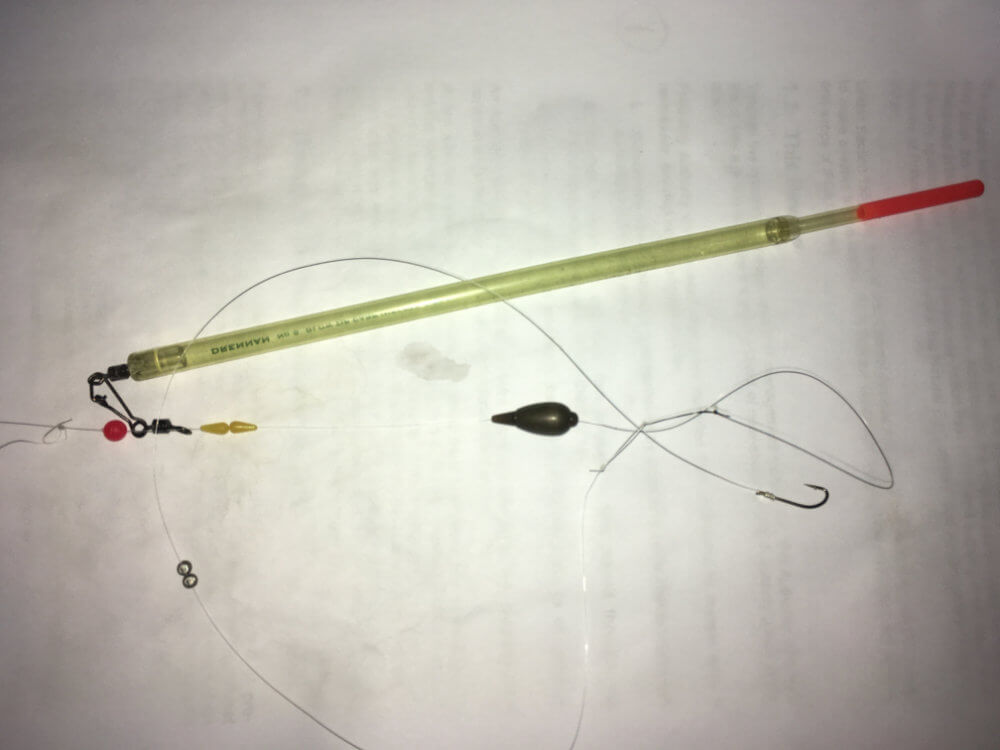
One of the great things about mullet fishing is the variety of venues and the surprise species that often turn up. It is not unusual to catch mackerel, bass or other species that give a great scrap on light gear. I’ll describe a recent session in Padstow where I’ve caught bass and flounder while mullet fishing but was not expecting what transpired! Although I generally go where it is quiet, I do like a fish in Padstow harbour. I’ll often sit quite happily among those fishing for crabs, watch the world go by and catch some great mullet!

By far the best time of day is early in the morning when not only is the fishing often at its best but it is quiet, and you can watch the harbour come to life. A couple of weeks ago I crossed Cornwall to arrive at the harbour at 6am. I like to wander around giving each spot I choose a go for about twenty minutes trying to find some feeding fish, not all the ones you see are happy to eat bread, but this method, early in the morning, will usually produce a quick response when you find some feeding. This morning was no different. I usually use the Cadence CR10 14ft #3 Match with the bolo float in venues like these where I need to regularly mend the line to prevent the float drifting. On neap tides such as today the harbour is not very full, and it is only necessary to fish up to about 11ft deep with six to eight feet being the norm. I’ll start at about six foot early morning and the bolo allows me to fish close to the moored boats and mend the line keeping the float in position.
On my second stop I saw some decent size mullet move from under a boat and onto my feed. A missed bite and then I was in to my first of the day and a good fish at 4lbs. I follow the same routine, walk round, look for a gap in between boats or where I can fish to a feature, if fish are hanging around one area that is often a good sign. As soon as I put my gear down, I will feed a couple of balls of liquidised bread where I want to fish. If, as is often the case in places like Padstow you are near moored boats, it is important to fish slightly away from them and beware of mooring ropes and other hazards. I’ll set the float to fish about seven feet deep which usually puts the bait just out of sight. I’ll feed more balls of feed about the size of an egg every few minutes to keep a constant column of feed in the swim. A good tip is to tear off small bits of bread or the crust and squeeze them, so they sink then throw these bigger bits of feed around the float. If after ten minutes I have had no bites I will deepen off if the depth allows, give it another few minutes before moving on. The idea is to make use of the early morning and find some feeding fish, later in the day I’ll stick longer in one place and wait for some to turn up. If I catch a fish or lose a fish, I’ll only give it another ten minutes maximum without a bite as the fish will usually spook.
This morning I was lucky, by 9am with everything coming to life and when the mullet disappear, I had landed three all over 3lbs with the biggest going 4lbs, now it was time for some breakfast.
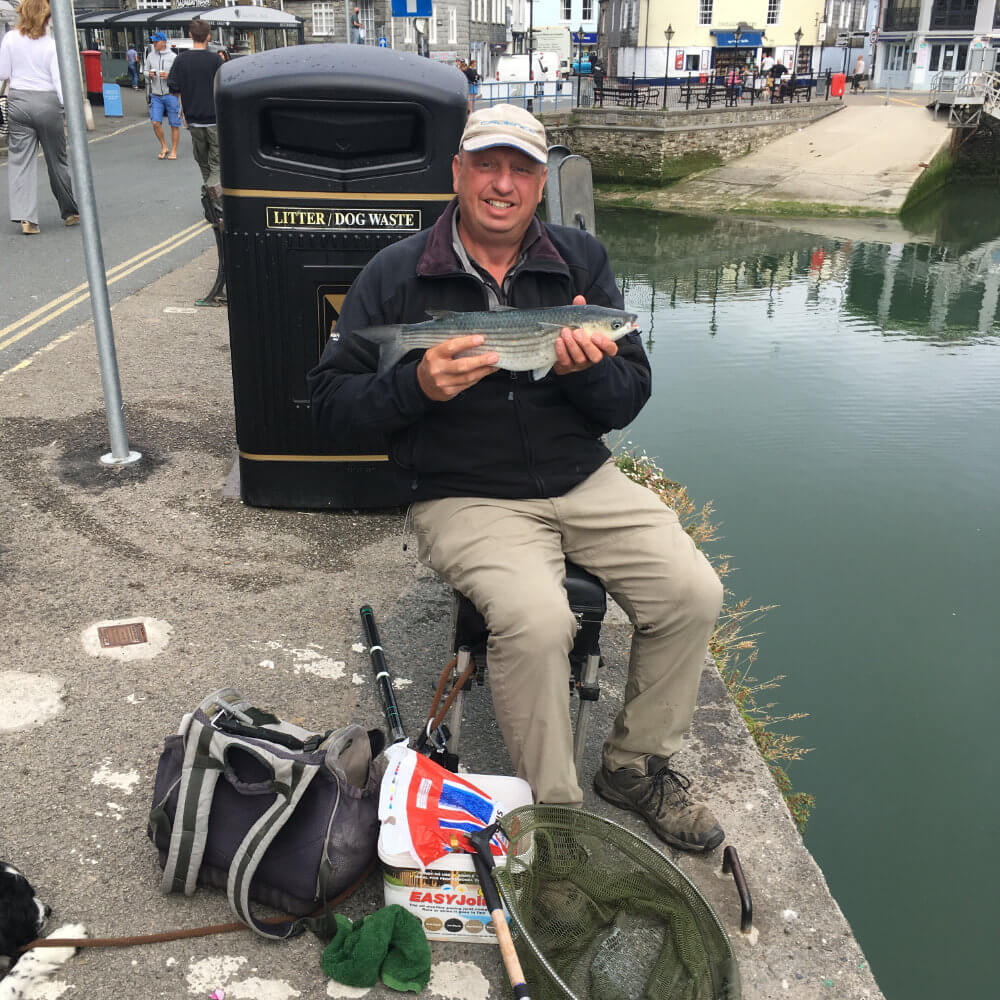
Before I went to the café, I put in quite a lot of bread and a couple of mackerel I crushed up in an area behind a fishing boat and not far from the harbour wall. I find during the day the mullet are not as active but will still feed albeit with a change in behaviour. During the day the harbours are often surrounded by people fishing for crabs with nets baited with bacon or fish, also there are often fishermen washing down the decks of their boats. This leads to the scenario of a lot of food introduced near the harbour walls, opportunistic, the mullet know this and it has not been unknown for the odd crab net to come up with a bass or mullet in it!
So, the tactic has now turned from actively looking for some feeding fish, to setting a trap. I find the guys on the crabbing vessels quite friendly and inquisitive and they will often supply me with some potting bait usually consisting of salted mackerel or sardines which I again crush up and throw into the area I’m fishing. By the way, a piece of mackerel flesh often with the skin removed, can be a deadly mullet bait! The bait is set far enough off the bottom to avoid the crabs and a waiting game now takes place. Today, the water level in the harbour which is behind a gate that only opens at high tide preventing the harbour drying out, is not very high so a slider is not required, a comfortable eleven foot sees me around six inches of bottom and out of reach of the crabs. I keep feeding the small balls of groundbait every ten minutes or so and try shallower, about seven to eight foot deep every twenty to thirty minutes in case one is higher up in the water.
By now the crowds were out and crabbers were busy putting nets of feed close to the harbour walls and after an hour the float went under and mullet number four was landed. I wandered down the jetty to the other end of a moored yacht and carefully released the fish waiting with it in the net until it recovered and swam off strongly. A note about handling. Grey mullet give their all in a fight and it is important not to be in too much of a hurry to lift a netted fish out to unhook it but allow it a minute or two to recover before unhooking. Again, rest it in the water after unhooking, if you are going to weigh and photograph it, then when you are ready to release the fish, ensure it is upright and can swim off before releasing.
I sat back down, and it was not long before another mullet was hooked, and the cycle then repeated another two times. Now, you may be thinking it was heaving and this is easy. Well, I believe the tactics are sound but six fish in a morning is quite a day and it does not happen very often unfortunately! It was now early afternoon and I was thinking about what time to pack up as I was fishing The Fowey later in the day meeting up with a local club member to do some bream fishing (giltheads and couches not brown slimy ones). To stop those thoughts, I had another good bite and a decent fish was hooked. This time the fight was not at all mullet like nor like a bass that would usually run off, it was not long before I could see the fish and at first, I thought it may be foul hooked but no, on netting, it was a trout.
It is certainly not unusual to catch sea trout whilst mullet fishing, what was unusual is that this one was a rainbow which actually makes it a steelhead and according to the EA migratory fish guy, Simon, a first in Cornwall and certainly a first for me! It weighed 2 ½lb and Simon requested I let him know the stomach contents which turned out to be prawns, this makes sense as it was caught against the pilings where there would be rich pickings. For the record it had lovely pink flesh and was the best tasting rainbow I have had for years!
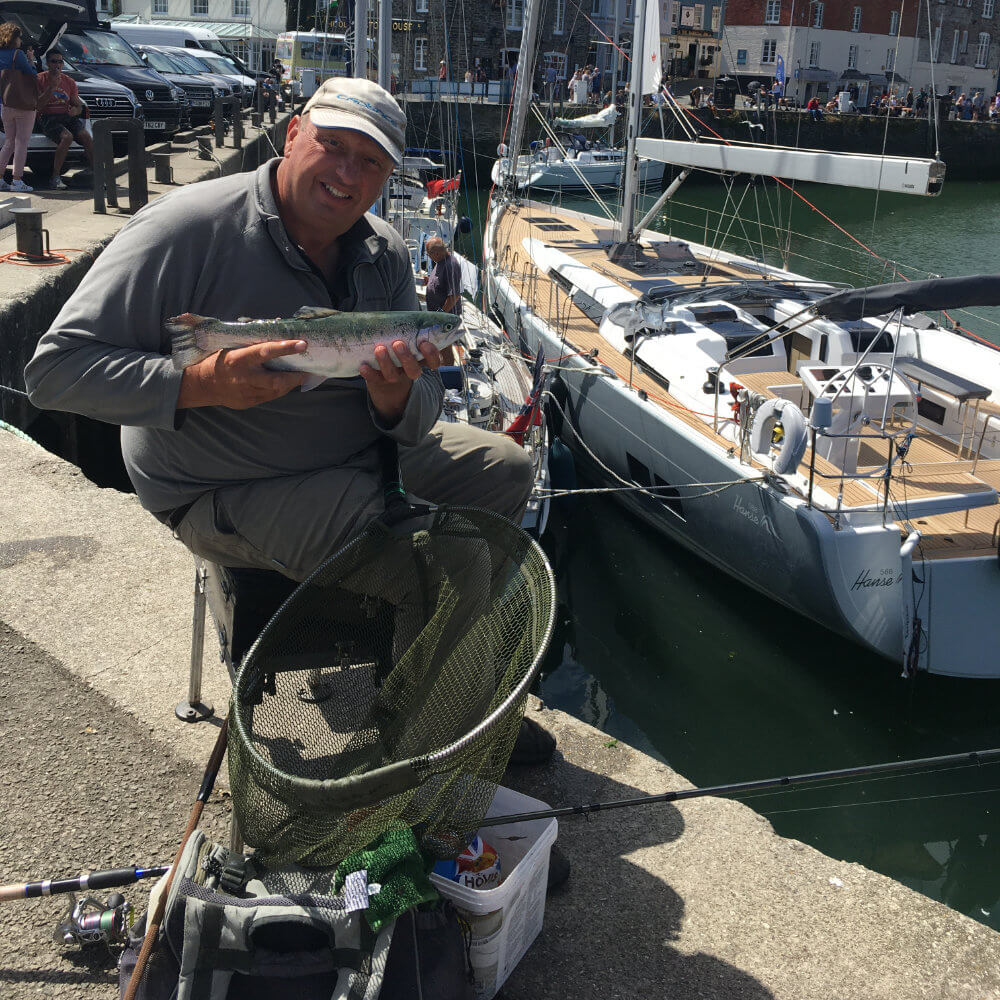
I hope I may have inspired many of you to try something different or given a few ideas you can employ, be warned mullet fishing can be extremely addictive, if you want to find out more visit our website.

